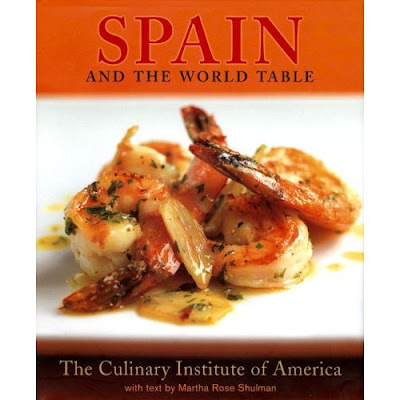
To comprehend the culinary explosion that has been taking place in Spain over the last twenty years it's important to understand the country's recent history. For nearly four decades following the end of the Spanish Civil War in 1939, Spain was cut off from the rest of the world by Franco's ultra-conservative government, and its strong creative spirit (think Picasso, Dali, Gaudi) was nearly crushed. Regionalism was repressed, and many local foodways risked annihilation. The government went so far as to make it illegal to make artisanal cheeses!In a nutshell, this sums up what CIA chefs discovered when they attended their 2006 Worlds of Flavor International Conference & Festival. The emphasis was on the best of traditional and contemporary Spanish cuisine and its influence on world menus.
Since the death of Franco and the restoration of democracy in spain, there has been a cultural explosion that has found a voice in gastronomy as well as the other arts. Regional food traditions are being revived all over the country. In contemporary restaurants everywhere humble traditional dishes have attained cult status. There is a regional exchange going on that is very new in Spain. Today Andalusian specialties like gazpacho and salmorejo are served in trendy Barcelona restaurants, something you never would have seen twenty years ago. Local products are being recognized and protected by the government with Denomination of Origin status. And creative chefs, now unfettered , are pushing the envelope with a cuisine that borders on science, and blurs the lines between what has gone before and what is possible in the future, while never losing sight of its Spanish core.
This cookbook which resulted from the conference features star chefs' recipes for Spanish recipes as well as feature articles about ingredients and regional cooking. It also could stand as an exploration of how chefs take an understanding of a dish and then tweak it to emphasize a feature ingredient or change its nature entirely. I found it fascinating when looking at solidly traditional recipes to see what other cooks had morphed them into on other pages.
Perhaps the Rice section gives the best example of this. When we think of rice and Spain, naturally paella comes to mind. The section begins with a classic country paella of Valencia and then gives a more contemporary vegetarian paella. We are shown a typical Valencian Seafood Rice and then a Caldero, a traditional fisherman's stew. However, these are followed by Rice with Duck, which is a fusion between the cooking of Peru and France, followed by a Sushi Paella framed in sheets of nori seaweed. Suffice it to say there is something for everyone. This pattern is seen again and again throughout the book.
I know I keep using word "fascinating" but that is exactly what I kept thinking as I paged through these recipes. The pride shown in the old classics and the excitement and innovation exhibited in the new creations cannot help but show anyone interested in food that Spain is experiencing interesting culinary times. Undoubtedly some of these will be looked back on as fads and some will carry forward as new standards for restaurants and eventually home kitchens. The question, of course, is what will prevail. This book gives a wonderful overview from which to watch that progression.
This is an oversize book with DK publishings trademark simple, elegant design and glorious photography which makes the recipes spring to life. The recipes are clearly written in steps that make it easy to see just what will be involved.
Recommended.
UPDATE
For the reaction of someone who has cooked from the book (which I should have done, I know, I know) ... check out Winos and Foodies.
No comments:
Post a Comment